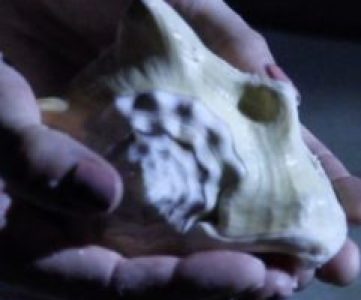TT Journal, ISSUE 4, 12th September 2022
By Cathy Greenhalgh
‘Teach the children. We don’t matter so much, but the children do. Show them daisies and the pale hepatica. Teach them the taste of sassafras and wintergreen. The lives of the blue sailors, mallow, sunbursts, the moccasin-flowers. And the frisky ones–inkberry, lamb’s-quarters, blueberries. And the aromatic ones–rosemary, oregano. Give them peppermint to put in their pockets as they go to school. Give them the fields and the woods and the possibility of the world salvaged from the lords of profit. Stand them in the stream, head them upstream, rejoice as they learn to love this green space they live in, its sticks and leaves and then the silent, beautiful blossoms. Attention is the beginning of devotion.’ (poet Mary Oliver from Upstream).
Mike Gunton, executive producer of The Green Planet (2022, BBC Natural History Unit) about plants and the vegetal world, written and narrated by David Attenborough, explains that:
‘because we are plant blind, we don’t really realize that this world goes on. This extraordinary parallel universe exists in a timeframe that we can’t comprehend….The aim of the series is to take the viewer through effectively a kind of time portal, rather like we’re going through the wardrobe into Narnia’ (Gunton in Priestley, article, 2022).
In this essay, I explore new technologies of time-lapse motion control in this series and position how these animation and stop-frame devices speak to notions of a chronotope of current ecology and networks during the anthropocene. I link this to what it might mean in terms of the attention economy (Doran, 2018) and relations with plant intelligence (Irigaray and Marder, 2016)and the age of “eco-anxiety” in the impending climate crisis. The manipulation of time, space and audience attention using spectacular time-lapse animation techniques is an essential method of achieving the point-of-view-of-plants narrative, and, though perhaps contentiously, an entertaining ecology-oriented-economy, with what Attenborough calls ‘hypnotic appeal’ (in Payne, 2022). Between this hypnosis and Mary Oliver’s ‘attention is the beginning of devotion’, I suggest some links between the ecstatic and attention and interpretations of a mindful approach to encompassing this relationship. I also look at how as filmmakers and viewers we are also “hooked” on attention to the beautiful, the dreadful, to distracting and immersive aspects of imagery in particular. Intense technologically expressive visual strategies like animation and all time-lapse, lighting and framing cinematography techniques play their part.
The desire for “veriditas”, greenness or green-life-force – vitality, fecundity, lushness, or growth’ has been evident during our lockdown quarantines and walking to get fresh air when there is an airborne disease threat. This latin term was used by early Christian saint Hildegard de Bingen to describe the divine, and a way of faith to the divine. Whilst the The Green Planet has been made over three years, with meticulous planning of sequences shot in California, Costa Rica, and Borneo, it was first broadcast in the UK initially during the current Covid 19 pandemic. Specifically this was the Omicron variant period, coinciding with the gloom of January to February 2022. This is the time of year when audiences expectation and desire are provided for in the TV schedules with dramas set in warm climates, holiday programmes and wildlife “colour” to cheer us up. The agenda is entertainment, but the BBC’s science programming brief would also seek to combine improving our mental health and “eco-anxiety” and address concerns about reaching net zero carbon emission targets, by stressing information and evidence of our dependency on the natural world and by creating empathy for plants. This is a relatively new attitude for natural history programming and the plant world has not been a focus for the BBC Natural History Unit “blue-chip” high end genre since Attenborough’s previous series The Private Life of Plants (BBC, 1995).The series is accompanied by a book, The Green Planet: The Secret Life of Plants (Barnes, 2022). As the title states, we will be given images and information that have been hitherto unrevealed and “secret”.
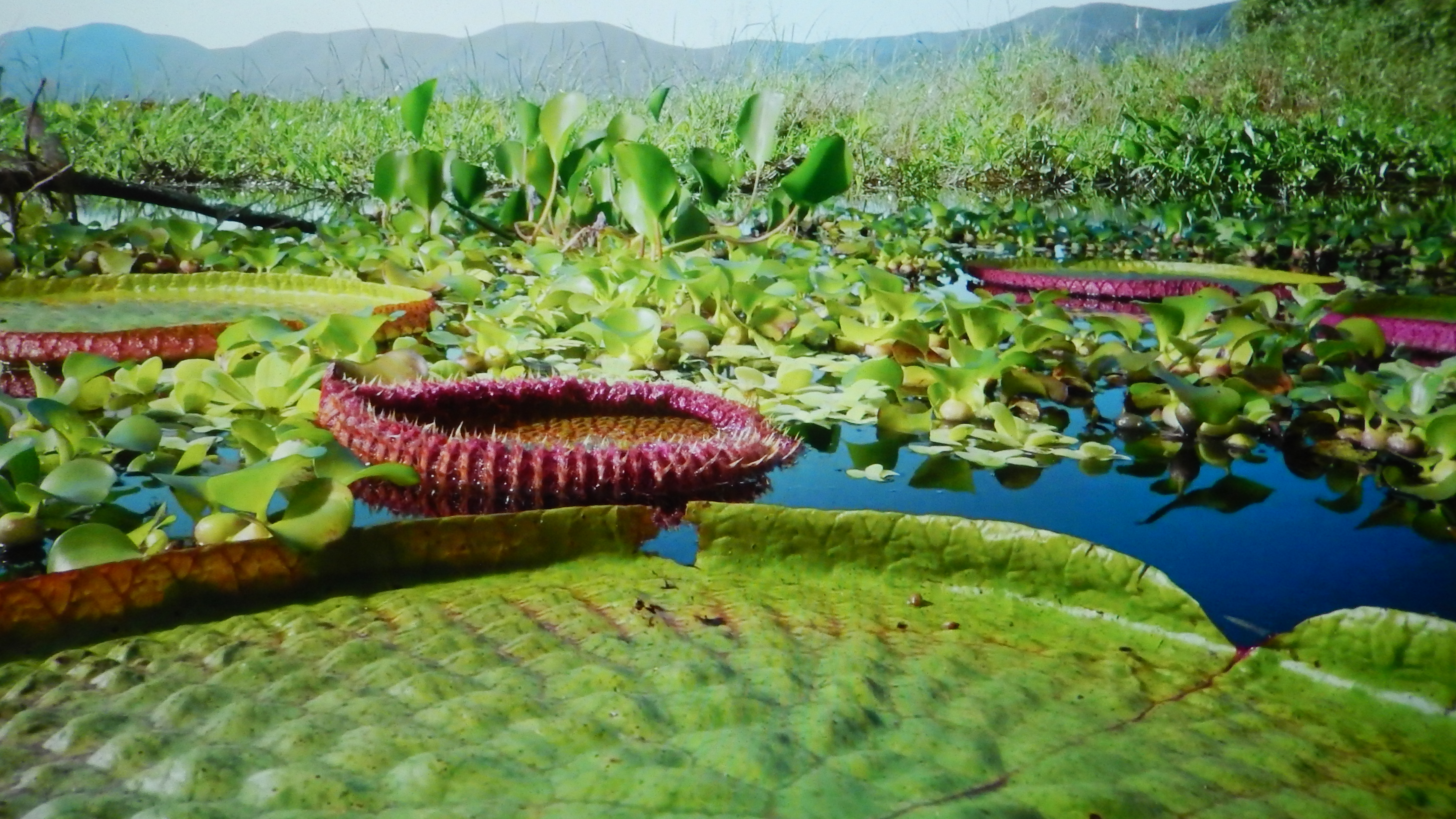
I choose one sequence and the “making of” it here to illustrate how the series carries out its work. This sequence is one of those in the series that the makers write about as one of the exceptional achievements and because it is broken down in the “Making of” film after episode 2, Water Worlds, Green Planet on Location (2022). The series varies between contemplative and forceful tone by flirting with numerous genre stereotypes. Therefore, those who like drama and high tension, or scientific information and detail, dreamy colours and textural immersion, musicality or humour, fascinating technique or ecological morality, will all be satisfied and satiated. This is carefully planned in sequences lasting from approximately three to five or so minutes, with scientific information interspersed with immersive sequences, set to orchestrated musical scores and with intensively worked soundtracks of natural sound. This sound may have been recorded on location, but is supplemented with foley post-production inventions. It sounds authentic and is often confusing, but of course if the filmed material is nearly always manipulated in the editing or is time-lapse, there is no original sound recorded in real time. Wildlife / natural history filmmakers wait hours, days, weeks, months, even years for certain shots planned for these type of programmes. Shots are often designed to be “superlative” in displaying knowledge, expertise, and the “never seen or filmed before” mode. Part of the wonder for filmmakers is of course their delight in invention. This enjoyment is possibly what audiences also pick up in addition to the unique glimpses into the natural world which our normal access and eye view could not give.
The voiceover and characterisation of the performance of the giant water-lily, is very dominant and mimics horror or mystery film narratives with its use of music and light and so on. Line producer Paul Williams explains The Green Planet series is about relationship and fragmentation, but it is also edutainment. He declares the ‘most spectacular sequence is the giant water-lily. It’s a great character…where the huge leaves unfurl, casting everything beneath into shadow, it reminds me of the scene in Independence Day when the enormous spaceship glides overhead’ (Williams, 2022). Whilst manipulation and careful attention to writing and planning shooting for sequences has been a method of filmmaking in the blue chip natural history programme for a long time, the work of the filmmakers is more honed than ever to the attention of the audience now. As executive producer Michael Gunton puts it: ‘the camera is moving in the audience’s time…It’s tracking as if we were filming in our world, but what’s going on inside the image is in time lapse, so it is like a moving portal. It’s not just a gimmick, it’s very, very important to the narrative’ (Gunton in Priestley, 2022).
The narrative of the giant water-lily begins with one leaf bud forming, as it arises and then swishes its head across the water surface, creating space for the large leaf which will eventually spread out as it unfolds. As hundreds of leaves accumulate the light is lost to other plants and the giant water-lily itself clogs up the area. The Pantanal in Brazil, where the water lilies are a tourist draw, is forty-two million acres and the largest tropical wetland in the world – still one of the most pristine. It sprawls across three South American countries; Bolivia, Brazil and Paraguay, and supports millions of people. On instagram and Google images, hundreds of pictures can be found of people posing, especially children sitting on the giant leaves and boats from which people are photographing. Clearly parts of the Pantanal are highly accessible, but the series gives the impression of wildness or wilderness as these programmes generally do. Humans are seen in the making of supplementary material and often in last in the series episode, where our inter-relationship is more fully explored. There is much critique of the impression of wilderness being “pristine” as being responsible for our poor attitude to environmental concerns (eg: Oelschlaeger, 1991).
The scene appears after we are introduced the Brazilian Pantanal in an aerial shot and two prior sequences about the water lettuce, water hyacinth and mosaic plants. These have different strategies for water surface survival, such as floating roots, spreading leaves and tall shoots. These scenes are playful and the time-lapse moves from graceful to speedy as the plants are ‘racing’ for light. The music is light-hearted and the plant movements have something of the feeling of surfers or swimmers at the beach. The sound effects are of rustling, jostling and sliding, with squeaks, like giggling laughter. This sets up the giant water-lily scene drama to come next as the screen turns dark and the camera peers into the blackness. The narrative is clear here in Attenborough’s voiceover script which punctuates the unusually long (for this type of series) 5’33” sequence:
‘These surface dwellers do have competitors…including one that is waiting in the depth and is now stirring’….’It is a monster’….‘It’s well-armed….It clears space for itself…by wielding one of its buds…like a club’….’This is a leaf of the giant water lily….It expands by over twenty centimetres a day and eventually measures two feet across….It’s immense leaves are supported by a network of air-filled struts and protected by spines two centimetres long….The leaves float high in the water. Their surfaces are dotted with tiny holes, drains that help them ensure rainwater doesn’t accumulate and sink them….Nutrients from the fertile mud below are carried up by tubes in its stem to fuel the leaf’s expansion. Over the next few months the lily will produce some forty or so of these gigantic leaves. And as each one reaches the surface and expands, more light is taken from the plants beneath….Competitors are pushed aside. Some are crushed…or skewered. Eventually its immense leaves press their margins against one another, totally cutting off the light from the plants beneath them’….The battle is over and victory is total’.
In this giant water-lily scene the lighting is as contrasty as in a film noir and there is extensive use of under-lighting and backlighting. Some of this is found or waited for in the Pantanal location, some in the studio, which was set up in a large shed in Devon for one year, to film close-up sequences. The plants were given especially from the Royal Botanic Gardens at Kew in London. Many shots are wide angles which extend the sense of the leaves being huge. The colours of the leaves are green and brown, but golden hotspots and black latticed shapes are used in intercut graphic patterns. The edge of the spiked leaves is a deep pink / red as they wobble up and out into bloated canoe / boat-like shapes above the water. Smoky edges, like sfumato in painting add to the mystery looking into the darkness from which the buds rise. The edges of frame are dark or the centre is dark and an unusual protrusion of the bud bursts upwards. The movement appears aggressive almost, but it’s impossible to tell if this feeling is exaggerated because of the time-lapse decisions, the number of still frames designed to fit an edited length and still provide cohesive, readable movement. Margaret Cohen writes in The Underwater Eye, about aquatic atmospheres in cinema and television. She suggests that in BBC NHU’s Blue Planet 2 series (2017) about ocean life, the film-makers ‘organize their imagery according to [the] underwater aesthetics’ (2022: 229) and shape ‘never-before-seen ocean life along the lines of pre-existing submarine liquid fantasies’. She maintains:
‘an aquatic atmosphere thwarts…a satisfying visual sense of deep space, mass and tangibility. Whilst the underwater haze can be relaxing at the surface, as a respite from the brightness of the sun…haze becomes gloomy the moment the plot turns menacing. Sublime effects are produced from obscurity as well as confusion’. (2022: 190).
This is exactly the atmosphere created in the giant water-lily sequence. The time-lapse begins with the leaf bud rising slowly and spikes forming. The leaves unfurl in repeating choreography after the leaf “club” has swished around in circles. As the story continues, the time-lapse speed increases and the spikes jab into other plants in a faster montage with requisite slashing and munching, sticking plaster pulling-off, gloopy treacle-sticky, type sounds. The final shot is an aerial drone track out above the whole area of round lily leaves covering a huge area of the Pantanal wetland. The music begins with eerie tones and rises to fast cymbal clashes and drumbeats, searing strings and then finally choral overtones. This is reminiscent of a Bond villain before the chase scenario, or approaching battle in a fantasy game movie genre.
All these are standard techniques in the natural history genre now. The use of time-lapse enhances storylines, creates character and embeds a sense of wonder and enchantment, whilst explaining a small amount of science detail. We see in micro and macro what we have not seen before, or seen so intensely. Yet the timing is all calculated by performance, just as an animator would achieve with any object or puppet / model. Performance speed and kinaesthetic gesture is built by testing the object to be animated against an idea of how the character will behave. Sometimes the performance / acting changes as with materiality of a character (in drawing and digital, but more particularly in traditional three-dimensional animation), because weight and fabrication affect movement. With animal behaviour, wildlife filmmakers observe, with the help of scientists and naturalists, and then construct sequences which may need timing within specific climates, locales and seasons. There have been numerous series where we see appropriated and imitated animal movement using various camera devices and attachments. These have increasingly involved expensive as well as simply improvised methods of shooting, including use of drones, infra-red cameras, remote sensing etc.
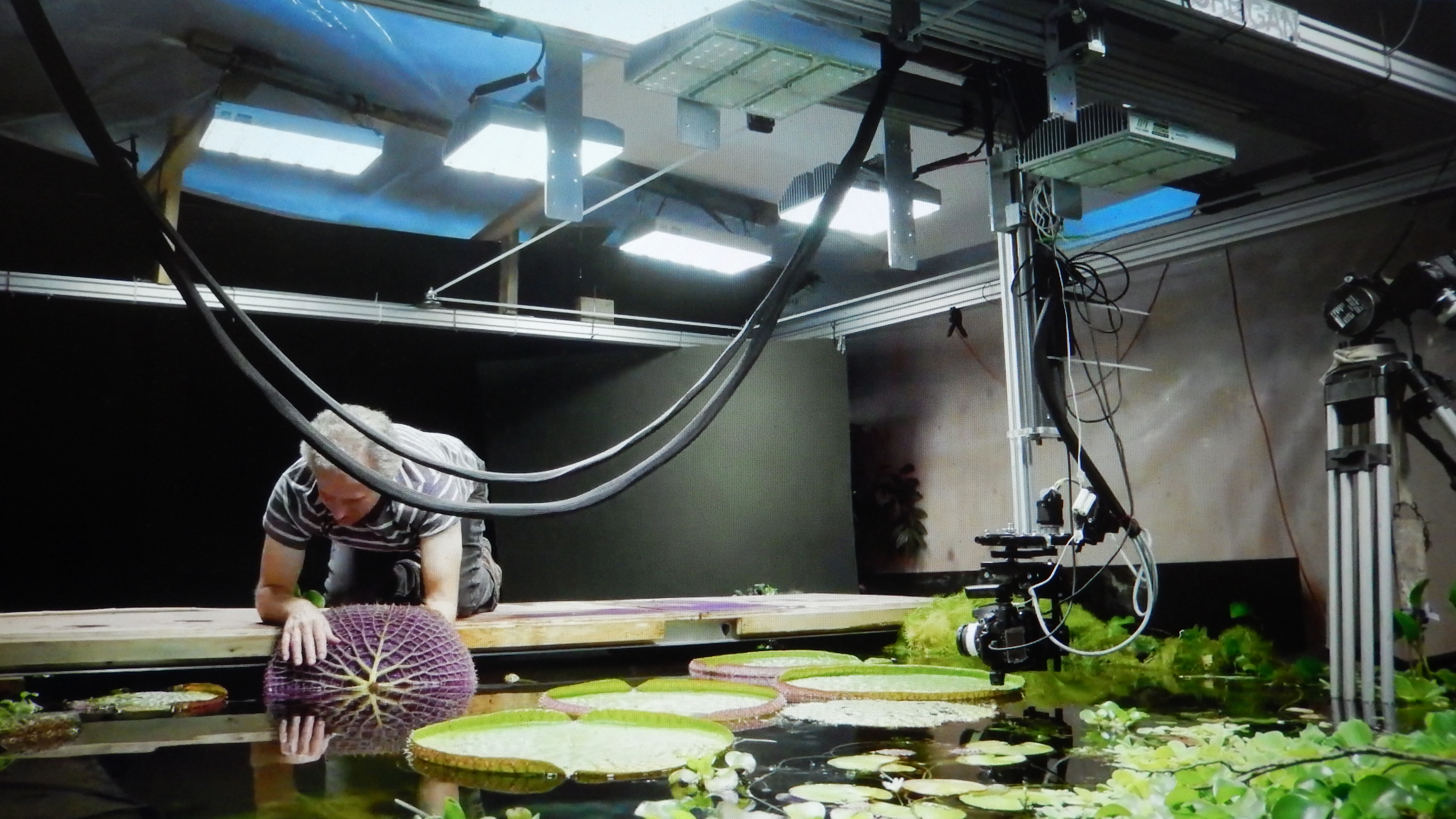
Time-lapse is used to create a time-space frame (chronotope) that is human, collapsing animal time into ours. But most of the larger animals we observe move at the same speed as ourselves, or at a least a speed we can understand and read in “real time” and apply slow-motion or fast motion (originally by shooting more film stock and projecting slower, but now with digital methods). We need time-lapse especially to look at longer processes such as a baby alligator cracking its way out of an egg, or termites building a mound. Green Planet begins with the first episode, Tropical Worlds (2022). The series utilizes a specially built robotic camera (nicknamed the ‘Triffid’) which, for example, used time-lapse to follow leaf-cutter ants from tree to underground fungus in one three-and-a-half minute shot containing seven thousand separate camera set-ups. But what is happening here with following and imitating plant processes? Are we making plant time into human time and is there potential misunderstanding inherent in that? Is the compression and expansion of time misleading?Is the revelation and reverie we discover or uncover as an audience undermining our care for the vegetal world or increasing our attention to vital knowledge of nature?
Tim Shepheard, Cameraman Director of Timelapse at the BBC Natural History Unit explains about shooting The Green Planet (in Williams, 2002):
‘On BBC’s Private Life of Plants twenty-five years ago, you’d point a camera at a plant and try to predict what it was going to do. It would grow out of shot and you’d start all over again. Now we have specially designed robotic cameras that we can programme to follow the action. We wanted to break new ground and to take the studio technology on location, so we worked with ex-military engineer Chris Field to shrink it all down to a field robot camera rig which we named the Triffid, because it was like science fiction. It can capture the fine detail of a leaf so that it feels like a landscape, but also “fly” you along a root and create long, continuous shots, The Triffid creates magic’.
In a long sequence in the “Making of” section at the end of the episode Water Worlds (2022)the elaborate construction of the set of Shepheard’s barn studio for filming close-ups of lilies is revealed, itself shot in time-lapse. It is made of hundreds of bricks and soil to create a ten thousand litre tank which is heated to tropical temperature and is fed continuously with fertiliser for the plants. The camera and lighting rig frame above allows the Triffid camera and mount to enter and swing above the water surface. Shepheard describes the timing of a shot and (pleasingly) a number of mistake shots are shown to explain how timing and practice are necessary to get a shot right. This sequence shows the amount of work needed as Attenborough and Shepheard describe the complexity of transplanting and growing a borrowed lily to capture shots that will cut with the live-action team’s shots from the Pantanal. The sequence clearly here shows his attention and expertise. He works with affordances and “collaborates” with the plant. This “Making of” plays out a humorous story of high level technical solutions and low level serendipitous and improvised hacks – such as cleaning the algae off the camera with a toothbrush and bucket. Nature does not comply and he learns its habits. Time-lapse is of course a very time consuming process and takes patience, repetition and adaptive planning to achieve smooth and “believable” effects. On the voiceover Attenborough says:
‘to capture this story in all its detail required a unique Green Planet approach, both filming in Brazil and a parallel mini-Pantanal in deepest, darkest Devon…. Tim must build a little piece of Brazilian wetland’….Tim has the reputation of being able to think “like a plant” ‘. And he has to keep the plant “happy”, ‘before the star of the scene can move in. Everything depends on this one plant. There will be no time for a second attempt….after months of pampering, the Devon giant is ready for action….The technology is working well, but nature is starting to derail Tim’s plan.’
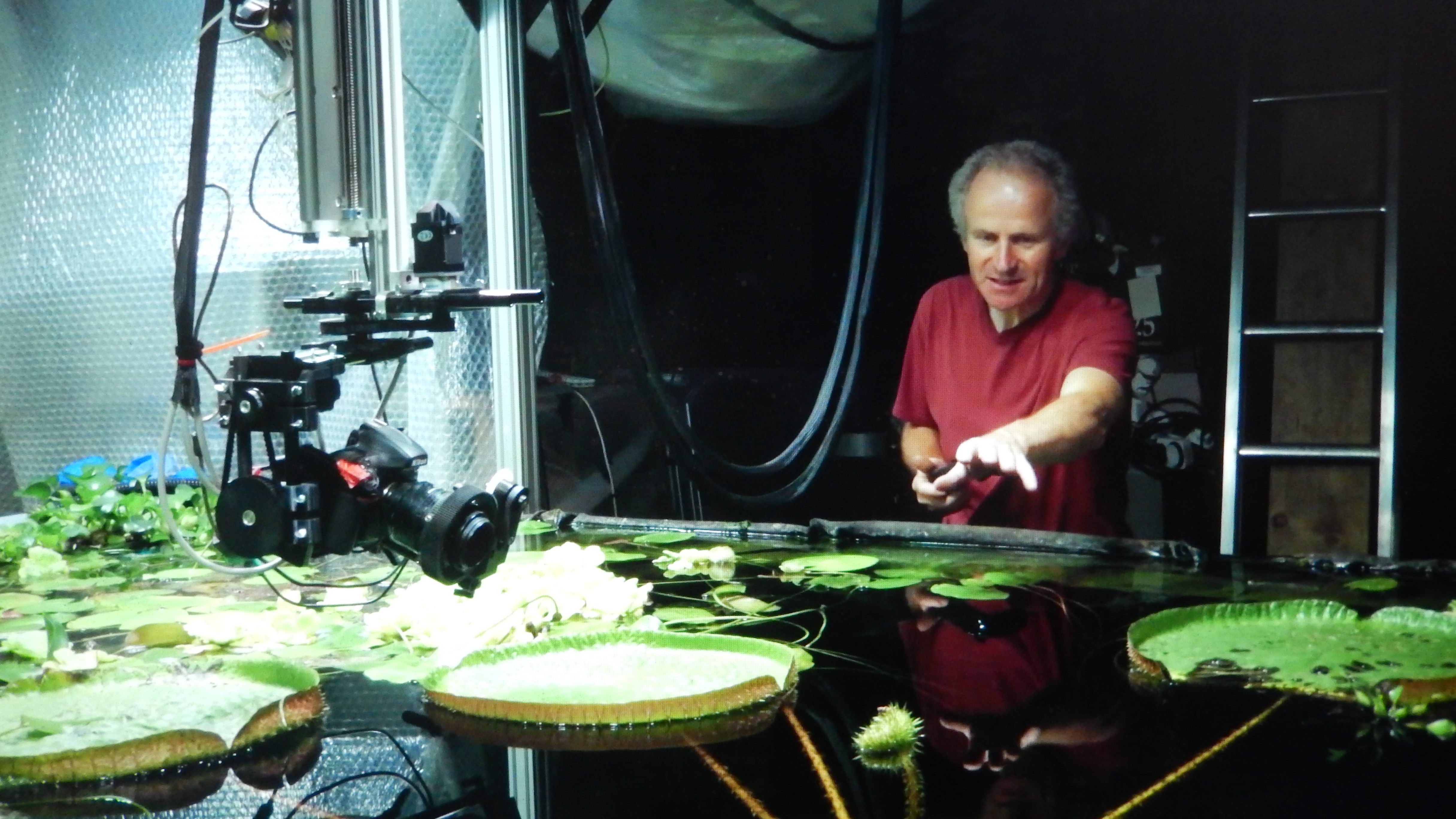
The camera gets tangled up and stinks from the algae and weeds that have to be removed constantly. ‘We’re getting our own little ecosystem here’, says Shepheard interviewed in the set. He explains a time-lapse calculation: ‘ It takes three days to grow. I want the shot to last ten seconds. That’s two-hundred and fifty frames, about one frame every twenty minutes’. Attenborough interjects: ‘…but plants don’t read scripts’. Shepheard continues:
‘Nature doesn’t always do what you think it’s going to do. We’ve had a few false starts where the leaf has swung out of shot and gone somewhere else or it just grows a lot quicker than you thought. …I think the difference with this series is we can bring the plants to life much more as characters, tell their story in a much more dynamic way. It’s great to be able to follow them around, much in the way you’d film an animal behaving. These rigs have given a whole new realm of possibilities’.
Attenborough rounds off the sequence: ‘After a year of filming and recording a hundred-thousand separate images, the secret life of the giant water-lily and the battle of the Pantanal is revealed.’ But Attenborough and Shepheard admit from the start here that it’s a story and characters they’ve constructed to “bring the plants to life”. To our lives that is of course. Dan Torre argues ‘pure time-lapse photography involves a mere marginal process of animation since it is a selective snatch of instances. He uses the example of plants in Disney animation as ‘synthetic time’ and ‘anthropo-chronism – a human concept of time placed on plants. For example to ‘subject a plant to the pseudo-animative process of time-lapse, they suddenly look very much alive because of their visible movement’ (Torre, 2017: 53). Paul Wells in his argument about metamorphosis as the core basis of animation writes that it deals in condensation and fabrication, it ‘destabilises the image, conflating horror and humour, dream and reality, certainty and speculation’ (Wells, 1998: 90). Metamorphosis ‘legitimises the process of connecting apparently unrelated images, forging original relationships’ (ibid, 90). This is what is happening with plant life in much of the Green Planet series.
Sylvie Bissonette, folds Deleuzian thought, Tom Gunning’s early cinema ‘theory of attractions’, phenomenology and neuroscience of perception into an analogy of animation affect, where she identifies ‘some animated films solicit the spectator’s dedicated attention’ (2019: 4) She claims:
‘I call “becoming-animated” the idea that animation can bring out the permeability of our sensory boundaries and manifest our readiness to be extended by the interface….Perception in animation does not happen in the head but at the intersection of the organic viewer and the animation apparatus’’ (2019: 3).
For her, metamorphosis ‘does not solely occur on the screen: the viewing body and the animation apparatus simultaneously transform the overall experience’ (2019: 7). She continues:
’The flow of affects aroused by metamorphic characters is central to our engagement with the animated media. By evoking various degrees of eeriness, bedazzlement, or visceral churning, they draw our attention to our own reactions to deviations from expectations. These perceptual encounters offer an opportunity to reevaluate our sets of assumptions about the body’s limits’ (2019: 266).
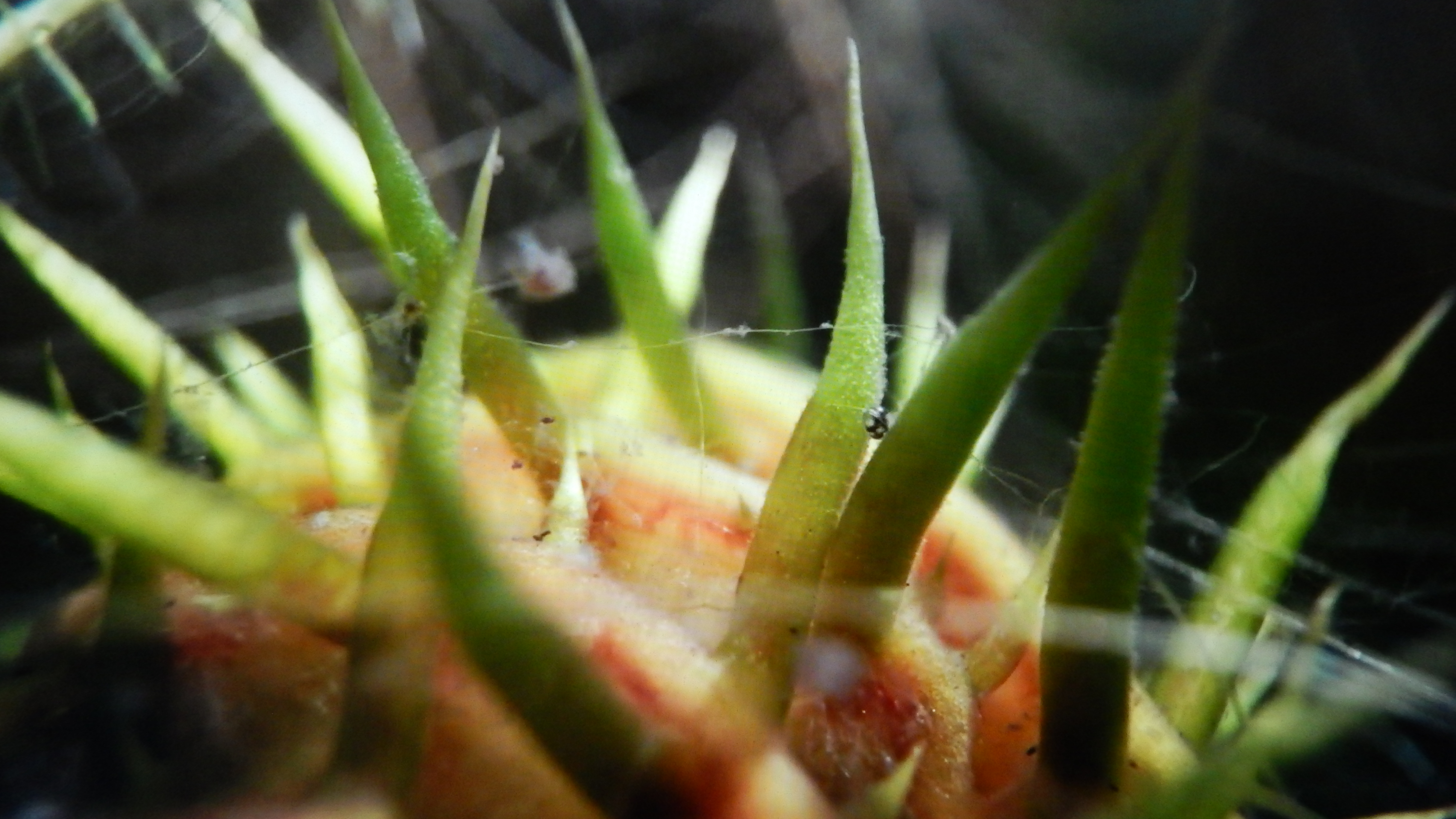
The continuation of action in the close-ups in the giant water-lily sequence involves hapticity in our viewing and choreographic repetition in the performance of the plant through montage. In The Skin of the Film, Laura Marks formulation of ‘tactile epistemology involves thinking with your skin’ (2000: 190) ‘Haptic visuality may “fasten” on its subject (according to its etymology), but it cannot pretend fully to know the thing seen (2000: 191). Instead haptic visuality inspires an acute awareness’ (2000: 163). It involves the audience in a kind of cathexis. In his Minnesota Declaration (April 30th, 1999), director Werner Herzog declares poetic or ecstatic truth in documentary ‘can only be reached by fabrication, imagination and stylization’ (Herzog in Prager, 2007).
Adrian Ivakhiv in Ecologies of the Moving Image points out that ‘self-reflexiveness rarely features in nature documentaries and when it does it tends to take the form of celebrating the prowess of the filmmakers themselves. But when they do contribute…to multiple views, it is in the presentation of non-human perspectives. He quotes Richard Beck on the way these series:
‘calibrate their moral universe by granting moral approval to attractive events, thereby equating ethics with aesthetics…its slow motion and time-lapse photography and its shots of all kinds at all speeds filled with colour of an almost otherworldly intensity depict the humanly uninhabited areas of the earth in such a way as to block the formation of conceptual or intellectual links between them and the political and economic processes that continue to accelerate their degradation’ (Beck in Ivakhiv, 2013: 210).
But Ivakhiv finds ‘yet there is little doubt that enjoyment of these series correlates to a heightened appreciation of the beauty and diversity of earth’s ecological systems…..through mesmerising visuals’ (Ivakhiv, 2013: 211). Some of these
‘human technological mediations facilitate and exchange…interpretants in environments that not so long ago were mute within human discourse….Fans celebrate this extension of human ingenuity and communicativity and the aesthetic nature of the response that is captured in the films. For them, the “making of” scenes are important because they help us to understand and appreciate how the filmmakers did it; they, in effect, celebrate the expansion of the human colonization of the world through technology’ (Ivakhiv, 2013: 215).
Jonathon Beller, writing about the problematics of cinema, takes the psychology and economics notion of the attention economy (coined by psychologist and economist Herbert Simon in 1971) as referring to the:
‘current stage of capitalist global political economy in which human attention itself has become ‘intensely valued and targeted. In a sense, attention is the contemporary target of enclosure’…Capital wants our thought, imagination, proprioception, aesthetics, and faith (2006: 36).
Beller argues that cinema is the cause of our attention diverting from what is observable and material in front of us to what is mediated for us on a screen. He presents a bleak prospect:
‘In the twenty-first century the ‘human’ will return as a spectre, a haunting. Indeed, “our” vestigial humanism haunts a planet where billions of human beings do not have the luxury to indulge in the richness of such a conceit. Because the expropriated commons includes not just shared social spaces or “natural” resources, but the historically produced and won realms of freedom and creativity that have been considered inalienable characteristics’ of human beings’ (2006: 294).
Beller’s analysis of the ‘cinematic mode of production as attention economy and society of the spectacle’ leads to thinking of cinema as a time-machine which is destructive. The
‘pleasure we get as we consume our own annihilation marks a contradiction as that which emerges from the early 1990’s I-Max film Blue Planet. As our eyes experience the exhilaration of digging deeper and deeper into the infinite resolution…the film proposes that space observation might aid in saving the visibly eroded planet still swirling majestically below us. This proposition conveniently elides the notion that the present condition of an earth that requires saving is a direct result of the very technology (optical, military, communicational – and the economics thereof) that offers us such breathtaking and “salvational” views”’ (Beller, 2006: 229).
Peter Doran calls for a new political economy of attention, mindfulness and consumerism: reclaiming the mindful commons (Doran, 2017: 4). This takes account of the emerging role of secular mindfulness in popular culture. He promotes the skilled use of attention, living with an awareness of somaesthetic everyday pleasures, such as in breathing, and thinking with care in such a way as to counter the effects of attention deficit which he aligns to ecological degradation (2017: 29). Doran maintains that the playing out of new knowledge about the anthropocene and the attention revolution are connected and suggests a
‘mindful commons is the ground or arena of a new struggle for autonomy and a new articulation of freedom. …often presented as a therapeutic response to the pathology often associated with modern lifestyles, ranging from depression to loneliness’ (2017: 16).
This is one reason why wildlife and natural history programming is deemed to have a beneficial effect, beyond scientific information. These series are extremely popular with audiences. Past debates about how these programmes are filmed seems to have given way to a desire for the beauty and well-being they may provide. I first heard of this perceived benefit in discussions at Wildscreen, a festival of wildlife films, held in Bristol in 1989. Tim Wu claims we need ‘better alternatives and ethics (2016: 351) to save us from being taken in by ‘absorbing spectacle’ and ‘clickbait’ (2016: 310). He uses the example of Trump as ‘attention merchant turned president’. Warning about social media and overwhelming visual stimuli, and what Microsoft calls ‘continuous partial attention’, he declares:
’what are the costs to a society of an entire population conditioned to spend so much of their waking lives not in concentration and focus but rather in fragmentary awareness and subject to constant interruption? In this respect our lives have become the very opposite of those cultivated by the monastics, whether in the East or West, whose aim was precisely to reap the fruits of deep and concentrated attention (2016: 352).
Kevin Kelly, founder of Wired magazine, wrote in the New Rules of the Economy of ‘valuable intangibles’. He listed immediacy, personalization, interpretation, authenticity, accessibility, embodiment, patronage, and findability. In his book The Inevitable, he gives another list: ‘becoming, cognifying, flowing, screening, accessing, sharing, filtering, remixing, interacting, tracking, questioning, beginning – whole new way of being’ (2016)….this is both mindfulness and attention to numerous areas with which we are involved with as filmmakers and audiences.
The producers of The Green Planet do promote the environmental message of the series as a key part of its broadcast remit. Most of Kelly’s lists above could be seen to apply in the valuable intangibles expected from the series for audiences. Rupert Barrington, series producer claims:
‘If there is one critical thing that we want audiences to take away, it is that intact, fully-functioning communities of plants are vital for the health of the planet and therefore vital to our own future. A lot of the series shows how plants are connected to each other and to animals in a complex web. These webs of life are resilient to change, they create oxygen, they store water and so on. But when these webs are weakened because species are lost, they become increasingly fragile. So we’d like to people to understand that we rely on plants for everything and if we allow plants to thrive, it is a benefit to all life on earth, including ourselves”. (Barrington, online article, 2022).
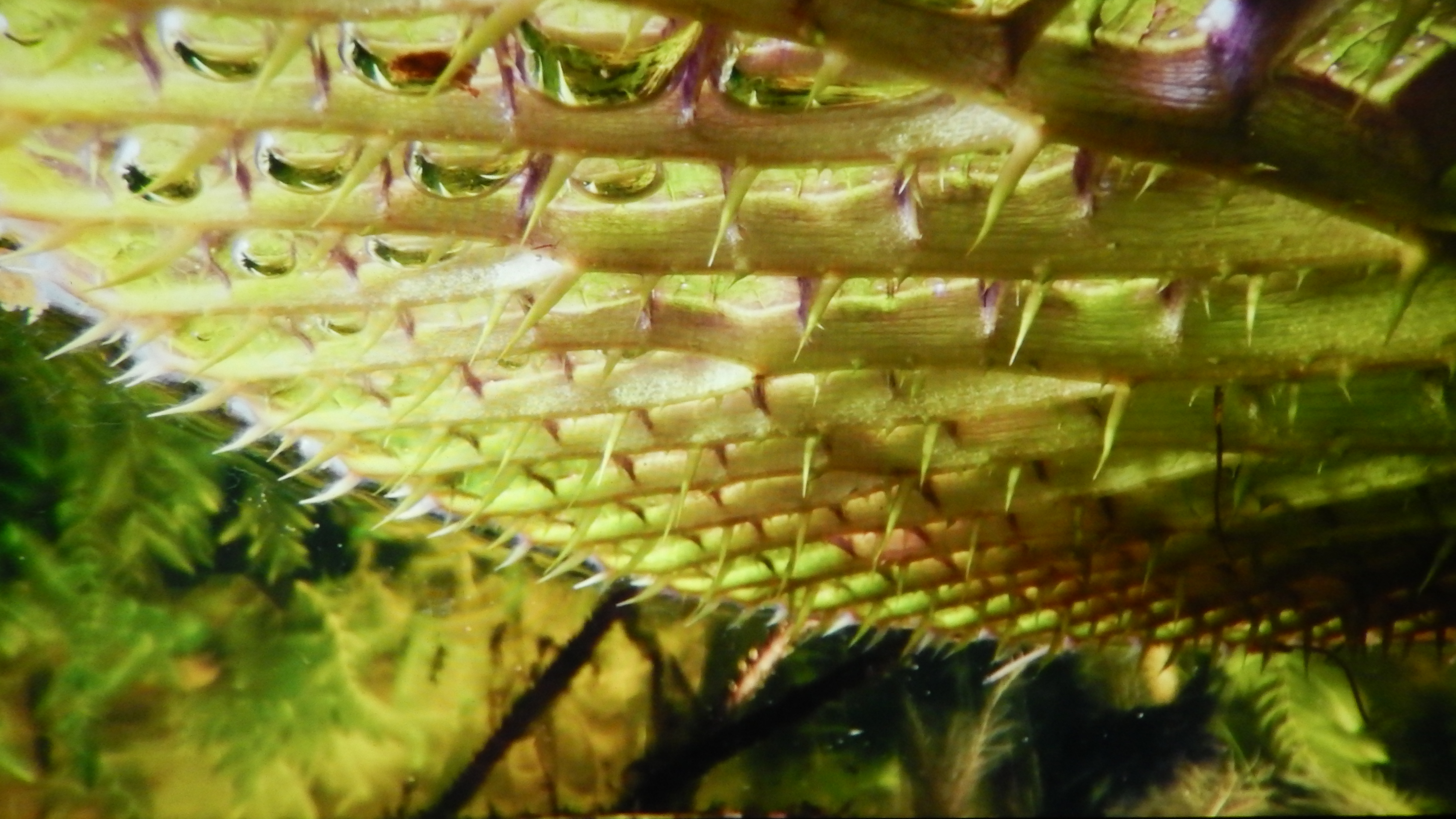
This desire is also a strategy which must incorporate guiding audience attention, but also be entertaining. The BBC Natural History Unit also uses virtuoso levels of expertise in the selection of producers, directors, cinematographers, sound designers, composers and editors and throughout its productions to achieve this. David Attenborough’s soothing and familiar voice and presence is assumed as an authentic, trusting guide. The science behind explaining our inter-connectedness with plants has been enhanced in popular science and anthropology publications such as Anna Tsing’s The Mushroom at the End of the World (2021); Eduardo Kohn’s How Forests Think: Toward an Anthropology Beyond the Human (2013), and Monica Gagliano’s Thus Spoke the Plant: A Remarkable Journey of Groundbreaking Scientific Discoveries and Personal Encounters with Plants (2018). The attention necessary in Gagliano’s text is combined with scientific memoir. Another example of this detail is in stories of plants containing evidence in Mark Spencer’s Murder Most Florid: Inside the Mind of a Forensic Botanist.(2019). Wellbeing and ecology are promoted as connected by for example George Monbiot writing about rewilding (2013) and Li Qing on forest bathing in Japan (2018). What is available and fashionable in the zeitgeist (which one forgets means “time ghost”) is also relevant to strategies of attention. When I first explored natural history genre media in the late 1980s, the media broadcasters at Wildscreen were reluctant to identify with what they saw as over-politicized speakers on the environment and were protective of the BBC’s public service broadcasting remit to stay neutral.
In Through Vegetal Being, a discussion between philosophers Luce Irigaray and Michael Marder, they meditate on the significance of the vegetal for our lives, ways of thinking and relations with human and non-human. Marder enthuses:
‘plants far exceed animals and human beings in their attentiveness to what is going on around them and with regard to levels of light, heat, moisture, movement, vibration…they are constantly in touch with the elements. Their continuous attention is inseparable from their life and growth….If we wish to discover ‘vegetal mindfulness’ in ourselves we should look no further than our bodies….Living attention to the location of growth is inscribed into the spatial pattern of vegetal bodies: more branches on the sunnier side of the tree, less roots if a plant grown in proximity to another of the same species, and so forth. By the very way plants inhabit their environments, they direct us towards the elements, to which they attend’ (2016: 158).
I’d like to draw these ideas about attention back to ecstasy, truth and documentary at this current time. Anthropologist Michael Taussig calls for a radical shift in this age of potential mass extinction and climate change, which he calls ‘dark surrealism’ (Taussig, 2020: 2). I hope my discussion of the Green Planet extracts show this dilemma. Taussig’s current anthropological social experiments hope for more sheer bursts of joy and wonder and he asks ‘might mimetic excess provide us with a way out? It is a form of trickery as well as magic…metamorphose into a thing in order to break the catastrophic spell of things?’ (Taussig, 2020: 5). Time-lapse animation is a path of attention for the maker and audience. Metamorphosis. One thing growing into another.
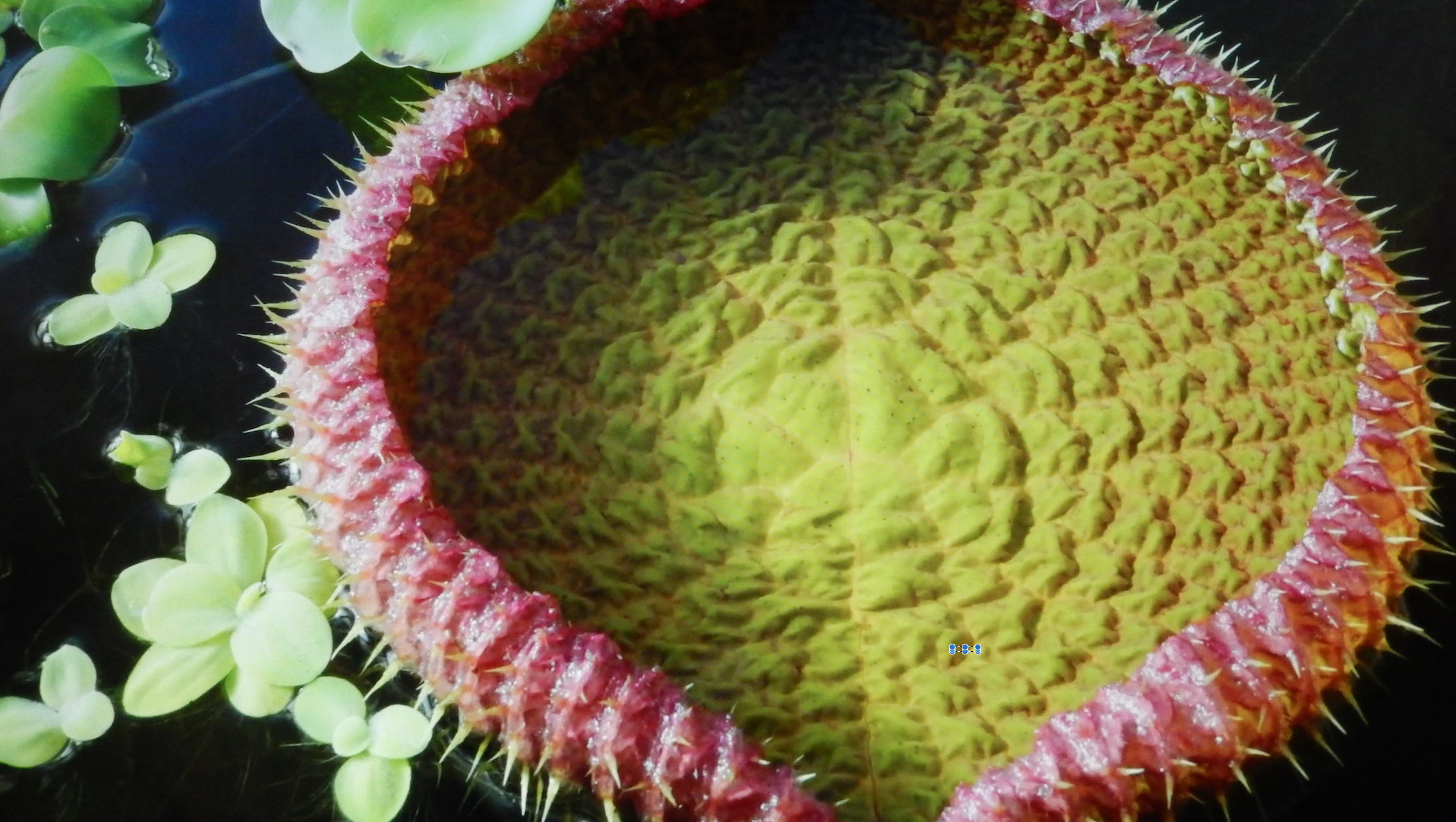
What Taussig calls for is ‘reenchantment of nature’ (2020: 55) and paying attention to ‘metamorphic sublimity’ (2020: 41). He declares:
‘In a re-enchanting world in which nature speaks back, the stirring tropes of demystification and enlightenment give way to new possibilities of thought and politics, rhetoric and power – what I will call “art versus art”. What sort of art is that, you ask? Well, not to put too fine a point on it, it is certainly not ideology versus truth, nor discourse versus counter-discourse, but an art of sorcery-speak in world gone rogue, piling on the negative sacred in which nature speaks through animate impulse and mimetic relays (Taussig, 2020: 144).
This idea of ‘art versus art’ could equally refer to our staging of nature in a series such as The Green Planet. Taussig continues:
‘Art versus art is companion piece to the metamorphic sublime wherein shape-changing is the order of the day along with camouflage, montage, collage, ventriloquism, and tweetery. The metamorphic sublime is now as prevalent in nature as in the shamanic arts of political theater’ (2020:145).
Nature and weather events speak back to us now, “whether we like it or not”, as climate change and the ‘meltdown’ to which Taussig speaks and the potential for mass extinction create this new dialogue. We may have to get used and learn much more about grief, empathy and connection to effect any change, if we have not already passed too many tipping points. We will have to work together because as science reveals, we really are all connected. Environmental philosopher David Abrams calls for more attention to the ‘spell of the sensuous’ to “find a way back” to a world that is ‘more than human’. (Abrams,1997). Timothy Morton also ties environment to art and the chronotope, with which timelapse as a technique is obviously so intimately bound:
‘An environment is not a neutral empty box, but an ocean filled with currents and surges. It environs. It veers around, making me giddy. An aesthetic wormhole, bending the terrestrial and ecological into the cosmological…spacetime is disturbance. A disturbing lens of matter-energy, we see as much as we can see, always less than all, through the convex kaleidoscope of spacetime. A thing is dappled with time’ (2021: 89).
Morton maintains this space-time-matter-energy dynamic and experience, and particularly the anxiety we are experiencing about the climate crisis, may be engendering the dialogue we need. To make any possible difference…and to counteract the feeling it is not to late, we can’t be indifferent and perhaps in the worst way, simply watch unfolding events as a kind of disaster entertainment until we are right in the catastrophe individually with our own communities. Morton writes:
‘The CARE/LESS is the halo of care, its aura. When it gets hand-wringing, ecological talk retains a strong smell of the agricultural-age machinating that got us into this mess – it’s that huge blank bar of bland soap again. ……what is required in playful care. This doesn’t mean that care is cynical (Morton, 2021: 101)….You don’t have to be ecological. Because you are ecological (2021: 105).
Perhaps, if we can re-meld this mediated technological attention of a technique like timelapse of plants with actual attention to real plants, as Mary Oliver opines for in her poem, our technology could also be serving our own and our green planet’s survival. Equally, whether attention is devotion, economy, magic, expertise or observation, it is also absurd in a way. Any attention, diverges from something else which becomes overlooked or hidden, subject to lack of focus. Metamorphosis and switching temporalities is a way of being nomadic, not fixing the self, or ranging through many. And it can be simply theatrical or ritualistic. It will be interesting to see how the filming of plants reflects where we see ourselves in relation to plants, ecology and whether it does influence our behaviour in the coming age.
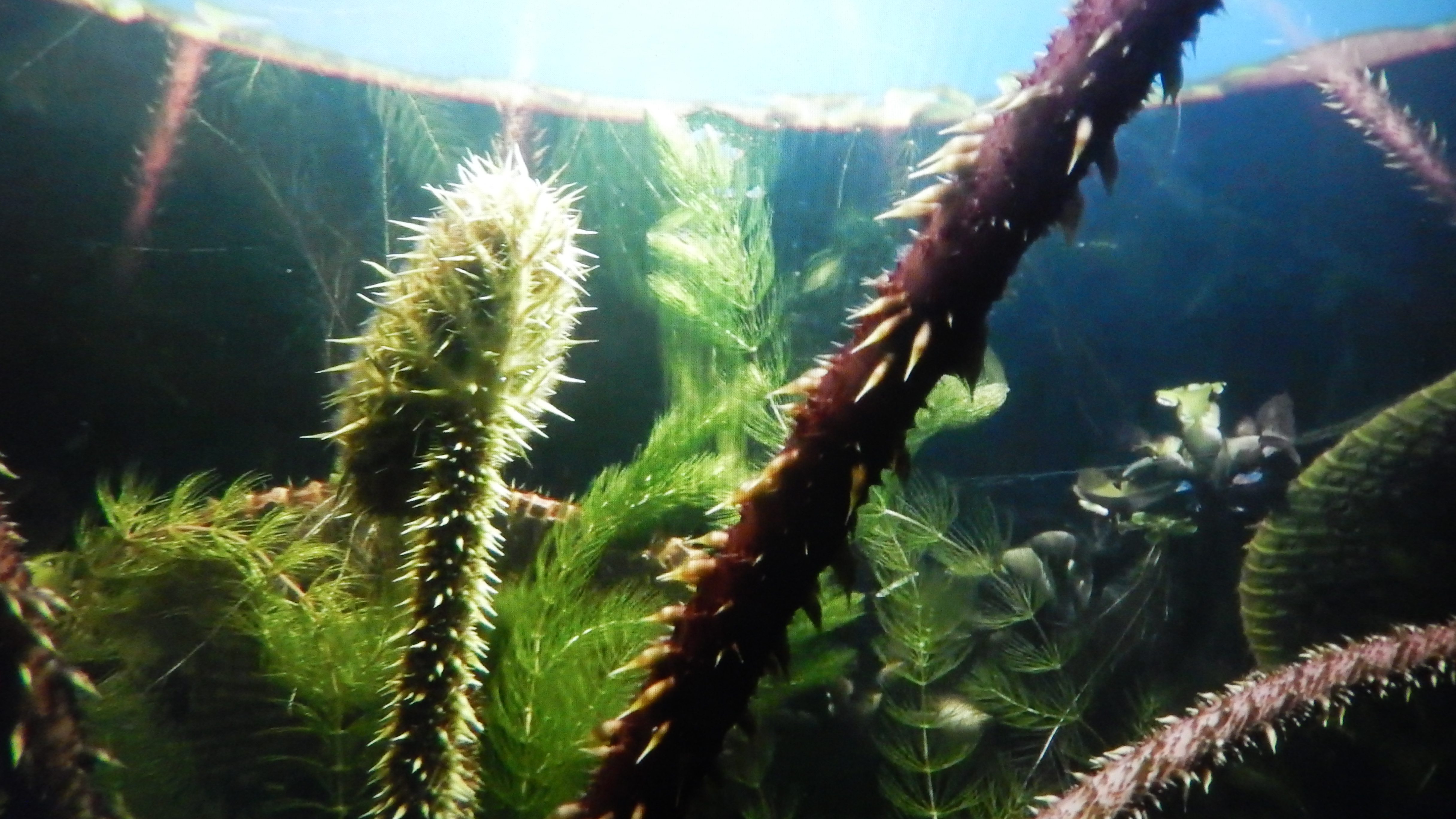
References
Abrams, David (1997), The Spell of the Sensuous: Perception and Language in a More-Than-Human World. USA: Vintage Books.
Barnes, Simon (2022). BBC The Green Planet: The Secret Life of Plants. London: Penguin – Random House.
Barrington, Rupert (2022). https://www.naturepl.com/blog/2022/02/08/the-green-planet/ Accessed August 30th 2002.
Beller, Jonathon (2006), The Cinematic Mode of Production: Attention Economy and the Society of the Spectacle. Lebanon, New Hampshire: University Press of New England.
Bissonette, Sylvie (2019). Affect and Embodied Meaning in Animation.: Becoming – Animated. New York and London: Routledge.
Cohen, Margaret (2022), The Underwater Eye: How the Movie Camera Opened the Depths and Unleashed New Realms of Fantasy. New Jersey and Oxfordshire: Princeton University Press.
Doran, Peter (2017) A Political Economy of Attention, Mindfulness and Consumerism: Reclaiming the Mindful Commons. New York and London: Routledge.
Gagliano, Monica (2018), Thus Spoke the Plant: A Remarkable Journey of Groundbreaking Scientific Discoveries and Personal Encounters with Plants. Berkeley, California: North Atlantic Books.
Hunt, Elle (2022) The Green Planet review: Plants as you have never seen them before. New Scientist. 5th January.
Irigaray, Luce and Marder, Michael (2016), Through Vegetal Being – Two Philosophical Perspectives. New York: Columbia University Press.
Ivakhiv, Adrian J. (2013), Ecologies of the Moving Image: Cinema, Affect, Nature. Waterloo, Ontario, Canada: Wilfrid Laurier University Press.
Kelly, Kevin (2017), The Inevitable: Understanding the 12 Technological Forces That Will Shape Our Future. Penguin Books.
Kelly, Kevin (1998). New Rules for the New Economy: 10 Ways the Network Economy is Changing Everything. UK: Fourth Estate.
Kohn, Eduardo, (2013), How Forests Think: Toward an Anthropology Beyond the Human. California: University of California Press.
Li, Qing (2018), Shinrin-Yoku: The Art and Science of Forest -Bathing: How Trees Can Help You Find Health and Happiness. UK: Penguin / Random House.
Marder, Michael. (2013), Plant-Thinking: A Philosophy of Vegetal Life. New York: Columbia University Press.
Marks, Laura U. (2000), The Skin of the Film: Intercultural Cinema, Embodiment, and The Senses. Durham and London: Duke University Press.
Monbiot, George (2013). Feral: Rewilding the Land, Sea, Sky and Human Life. London: Penguin Books.
Morton, Timothy (2018), All Art is Ecological. London: Random House / Penguin Books.
Oelschlaeger, Max (1991). The Idea of Wilderness: From Prehistory to the Age of Ecology. USA: Yale University Press.
Oliver, Mary (2019), Upstream: Selected Essays. Penguin Publishing Group.
https://www.penguinrandomhouse.ca/books/318638/upstream-by-mary-oliver/9781594206702/excerpt. Accessed 7th August 2022.
Payne, Terry. (2022), David Attenborough on the “hypnotic appeal” of nature docs like The Green Planet. Radio Times. 9th January.
Prager, Bard (2007), The Cinema of Werner Herzog: Aesthetic Ecstasy and Truth. London and New York: The Wallflower Press.
Priestley, Jenny (2022). How a Triffid captured The Green Planet. 6th January. TVB Europe.https://www.tvbeurope.com/production-post/how-a-triffid-captured-the-green-planet
Spencer, Mark A. (2019), Murder Most Florid: Inside the Mind of a Forensic Botanist. London: Hardie Grant Publishing / Quadrille.
Taussig, Michael (2020), Mastery and Non-Mastery in the Age of Meltdown. Chicago and London: University of Chicago Press.
Torre, Dan (2017), Animation – Process, Cognition and Actuality. London and New York: Bloomsbury Academic.
Tsing, Anna Lowenhaupt (2021), The Mushroom at the End of the World. Princeton University Press.
Wells, Paul (1998), Understanding Animation. London and New York: Routledge.
Williams, Paul et al (2022), The Green Planet on Location: Behind-the-scenes stories from the makers of the New BBC1 series.
Wu, Tim (2016), The Attention Merchants: The Epic Scramble to Get Inside Our Heads. Knopf.
BBC 1. (2022), The Green Planet: Breathing Life Into Our World. 2022. Series Producer: Rupert Barrington. Executive Producer: Michael Gunton. Narrated by David Attenborough. BBC Natural History Unit. 5 Episodes: Tropical Worlds, Water Worlds, Seasonal Worlds, Desert Worlds, Human Worlds. Excerpts from Episode Two Water Worlds.
BBC1. (2022). Green Planet on Location. BBC Natural History Unit (within above programmes).
BBC1 (2017). Blue Planet 2. BBC Natural History Unit.
BBC 2. (1995), The Private Life of Plants. 6 episodes. Writer and narrator: David Attenborough. Executive Producer: Mike Salisbury, BBC Natural History Unit with Turner Broadcasting. Episodes: Private – Surviving, Living Together, The Social Struggle, Flowering, Growing, Travelling.
Cathy Greenhalgh is an artist, film-maker (director-cinematographer), lecturer and media anthropologist living in London, UK. She makes ethnographic essay documentaries and short art films for cinema and gallery spaces. She publishes on film-making practices and communities of practice, cinematographic phenomena and aesthetics. After retiring from working full time in higher education she continues on a freelance basis and returned to art practice, specifically collage, during the pandemic. Her varied praxis has ecological, cultural and political undertones. The sensory ethnographic and material culture basis underlying her research foregrounds historiography and spectrality, collaboration and technical innovation, rather than primarily theoretical interpretation. https://independentresearcher.academia.edu/CathyGreenhalgh
*
Cathy Greenhalgh’s article was originally presented as a paper during Ecstatic Truth VI, an annual symposium dedicated to expanded animation and documentary (conceptualised very broadly as non-fiction), with a particular interest in the questions raised by experimental and practitioner perspectives. The theme of the 2022 symposium, which took place in Prague and online, was To Attend. You can also see the full recording of the programme here:
